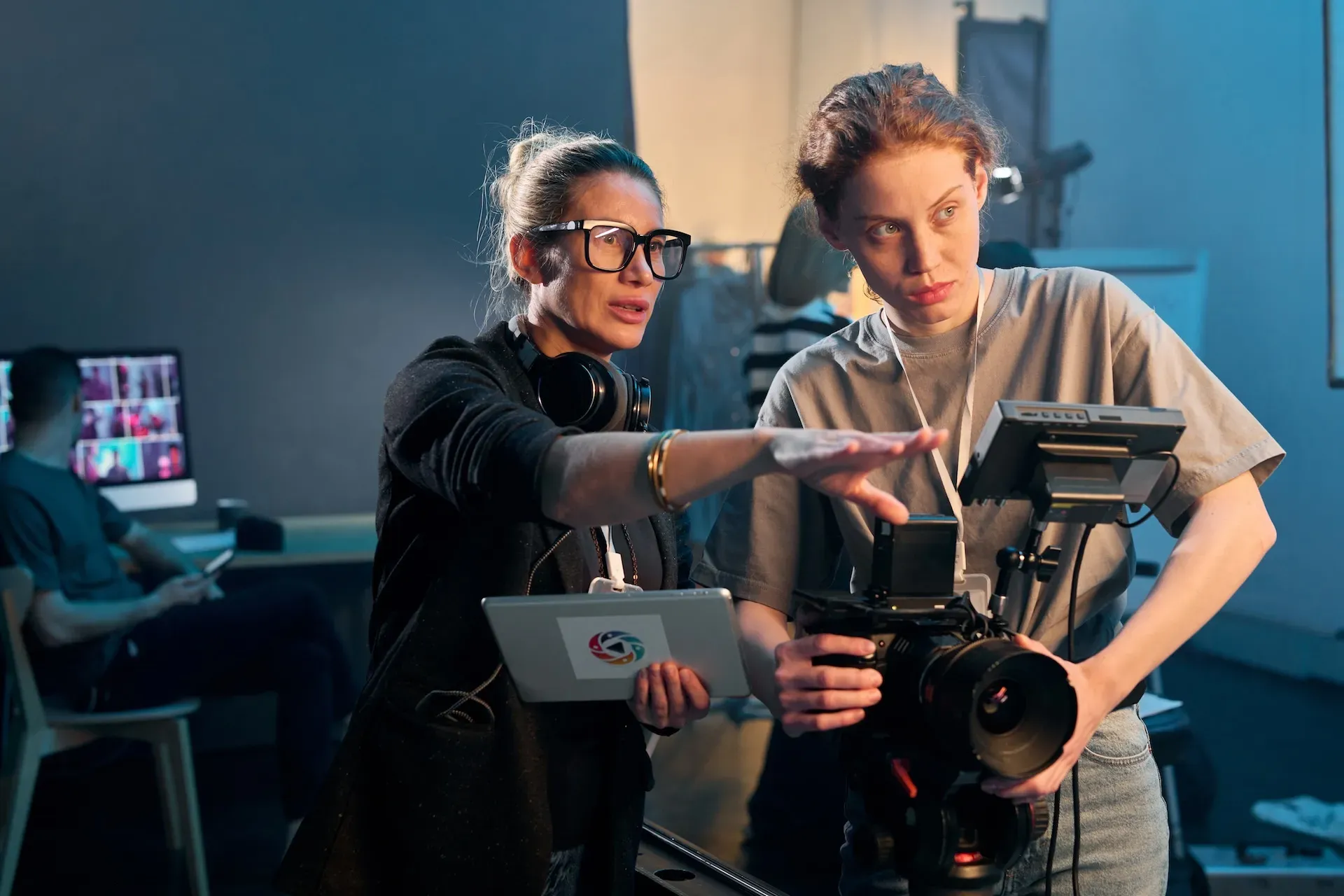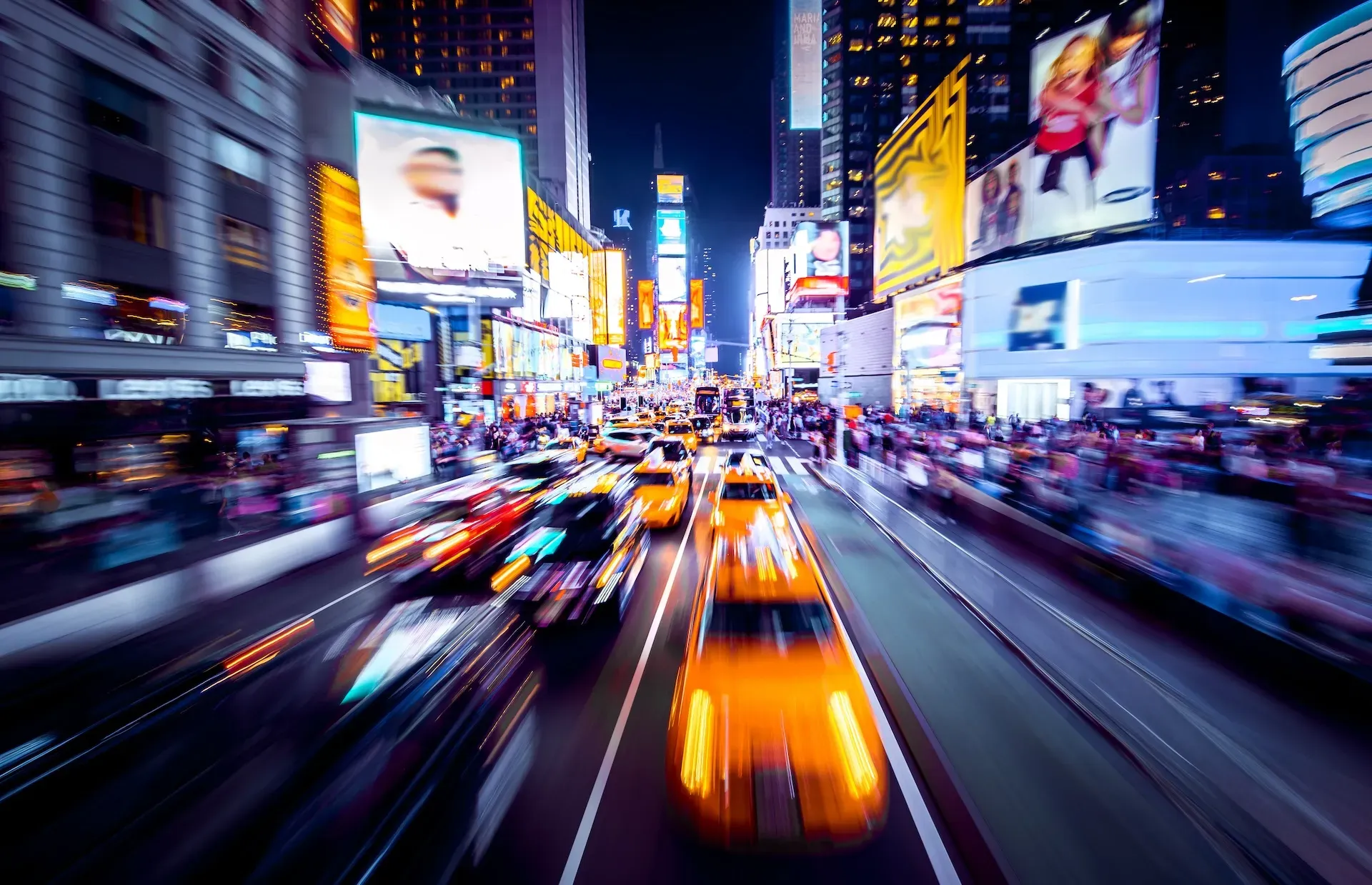What is motion blur, and how can you use it in your content?
Learn what motion blur is, how to use it, and how to avoid it if needed.

Motion blur can give your content a touch of realism, but is it always needed? Let’s run through the essentials today.
We’ll discuss:
- What is motion blur?
- Why should you use motion blur?
- How do you create motion blur?
- Should you remove motion blur?
- How to remove motion blur
What is motion blur?
Motion blur is an effect that happens when a camera, subject, or both move too quickly. The result is a ‘streaking’ or ‘smearing’ effect, and can be seen in real life — if a super-fast object whizzes past, for example. Not everything is in focus all of the time, and motion blur reflects that.
Why should you use motion blur?
Using subtle motion blur mimics what the naked eye sees. For example, if you were to watch a Japanese bullet train drive past the station, it wouldn’t look crystal clear. Rather, it would suffer some kind of motion blur, as your eyes wouldn’t be able to keep up. Using this technique lends your filmmaking a realistic flair.
You can also use motion blur to give your content an exaggerated, hyper-speed quality. Let’s take Quicksilver from X-Men. Sure, he’s pretty fast — if he overtook you in the 400-meter dash, chances are he’d look a little fuzzy. But the motion blur he leaves behind is so over the top, it ends up looking stylized. Given he’s a larger-than-life Marvel character, that makes sense.
Because motion blur happens in an audience’s day-to-day, they’ve come to expect it when watching on-screen content. Visuals without motion blur may look unnatural, and can yank audiences out of the experience. That’s why motion blur is often added in post-production, even in mediums where it doesn’t happen organically, like animation and video games.
As a last resort, motion blur can cover up a choppy transition or less-than-perfect shot. Hopefully, you’ll have enough B-roll in your back pocket to paper over the cracks, but motion blur could be considered here.

How do you create motion blur?
Motion blur is usually achieved via four main avenues: camera movement, subject movement, shutter speed/frame rate, and video editing software. Let’s look at each of them.
Camera movement
Rapidly moving the camera can result in motion blur — it’s the same as violently shaking your head from one side to the other, hopefully without the ensuing dizziness. This effect can be intensified or dampened by the shutter angle, too.
Specific camera movements like the whip pan use motion blur to create dynamism within a shoot, hopping from one spot to the next or even transitioning between scenes. Wes Anderson’s films are full of them — check out this compilation of (mostly) whip pans from The Grand Budapest Hotel.
Subject movement
If a subject moves at speed and the camera’s close enough, motion blur will happen. This is great for action-packed scenes, and can inject a dose of dread into horror- or suspense-based content.
Shutter speed/frame rate
Frame rate controls the amount of frames taken per second, while shutter speed determines how long the shutter is open during each of those frames. Playing around with these variables can create more deliberate, exaggerated motion blur.
Shooting at 24FPS with double the shutter speed — so, in this case, 1/48 — should provide solid motion blur. That’s because these settings closely mimic the human eye.

Video editing software
Video editing software like Adobe Premiere Pro, After Effects, CapCut, DaVinci Resolve, Blender, and more all support motion blur. In fact, they offer motion blur presets, allowing you to create, increase, and minimize the effect to your liking.
This option is handy when collecting footage from different sources. Say you’re trying to tie animation, archival content, and ‘natural’ present-day footage together in a cohesive manner — post-production motion blur could be your new best buddy. This deliberate blurring is often called ‘aesthetic blur’.
Should you remove motion blur?
So, motion blur on or off? Why would you even want to remove it? It depends. If your footage has too much motion blur, it might affect the quality. We all love The Blair Witch Project’s motion-blurred mayhem, but it shouldn’t be a reference point for your corporate ad.
And in the same way that you can add motion blur for aesthetics, you can remove it. The result will likely be strange and not super-realistic, but that might be the style you’re aiming for — total motion blur removal will make footage seem smooth and unnatural.
Take something like Ang Lee’s Gemini Man. When presented in its original high-frame-rate glory, coming in at 120FPS and (probably) 1/240 shutter speed, the movie looks unreal. And that’s the point. It’s a high-concept sci-fi thriller, and the lack of blur matches the vibe.
How to remove motion blur
If you’d like to take the plunge and remove motion blur, we applaud your bravery. Here’s how to do it.
Change your shutter angle
A 180-degree shutter angle is typical for motion blur, because — surprise of the century! — it’s similar to how the naked eye perceives the world. If you go for a 45- or 90-degree shutter angle, you can minimize blur. But what does that look like?
Let’s focus on one of the most famous and best examples: Steven Spielberg’s Saving Private Ryan. That film’s cinematographer, Janusz Kaminski, angled the shutter at 45 and 90 degrees during the harrowing D-Day landing scene.
Doing so eliminated motion blur, giving the footage a hyper-kinetic, nightmarish quality. It’s not going to work for every shoot, but it achieved its goal here — WWII veterans say it’s cinema’s most realistic depiction of conflict.
Bump up the frame rate
Increasing your frame rate doesn’t guarantee blur-free footage, but it becomes more difficult to spot. You can also minimize motion blur by raising the shutter speed to more than double the frame rate. The effects and success of doing so will depend on your shooting conditions, resting on variables like lighting and exposure.
Use video editing software
As we touched on earlier, video editing software can ease motion blur. The effects might not be as watertight as changing the frame rate or shutter angle, but it’s worth trying.
Now that we’ve covered what motion blur is, why it’s effective, and how to dial it up or down, it’s time to get out there and shoot your footage. Don’t be afraid to experiment, try weird things, and use motion blur to fine-tune your footage.

Another aspect that’ll improve your content is music. After all, the soundtrack can make or break your content — why let one needle-drop derail your project? Epidemic Sound’s got you covered.
Our catalog is high-quality, affordable, and safe. An Epidemic Sound subscription goes beyond royalty-free music, removing the headache of licensing and freeing you up to do what you do best. You can enjoy the safety of our license hand-in-hand with our massive catalog of 50,000 tracks, covering just about every genre you can think of. You’ll also gain unlimited access to our advanced search functions — finding the right sound’s never been easier.
It’s better than royalty-free. It’s worry-free. Get started with Epidemic Sound below.

Are you a filmmaker? We've got you covered with background music for videos, including:
Take your video editing to the next level with our massive catalog of music for filmmakers.

